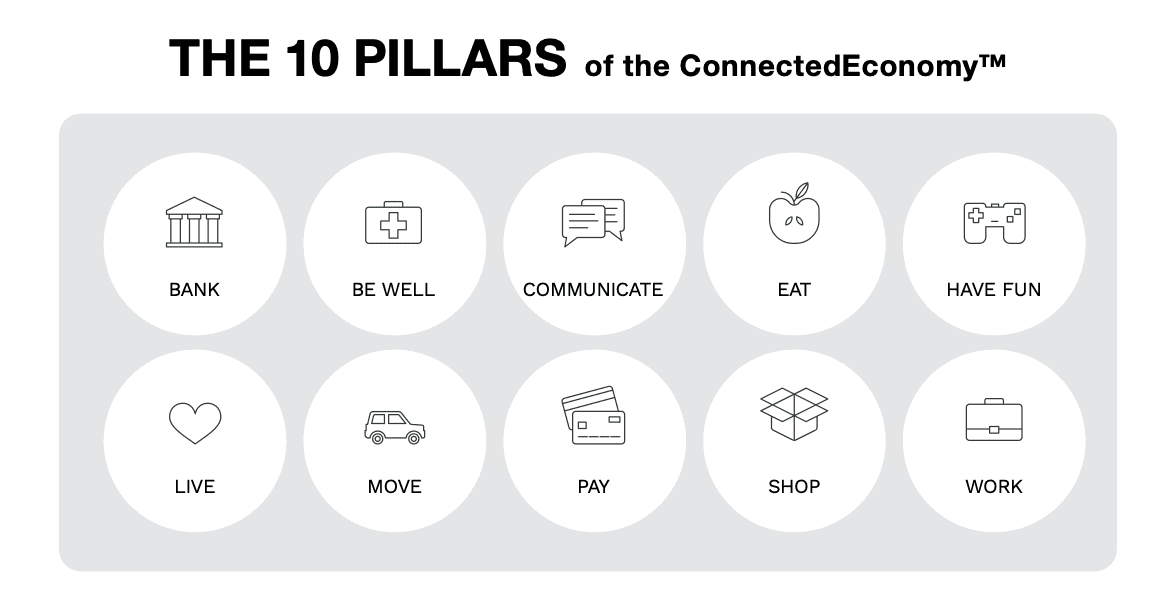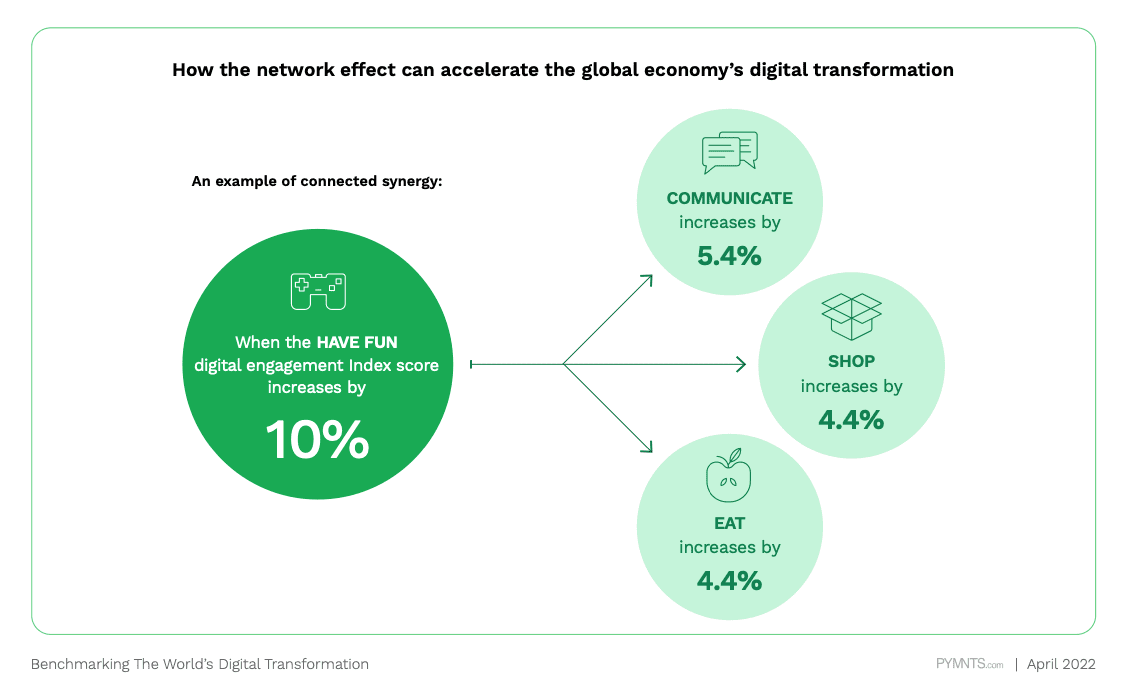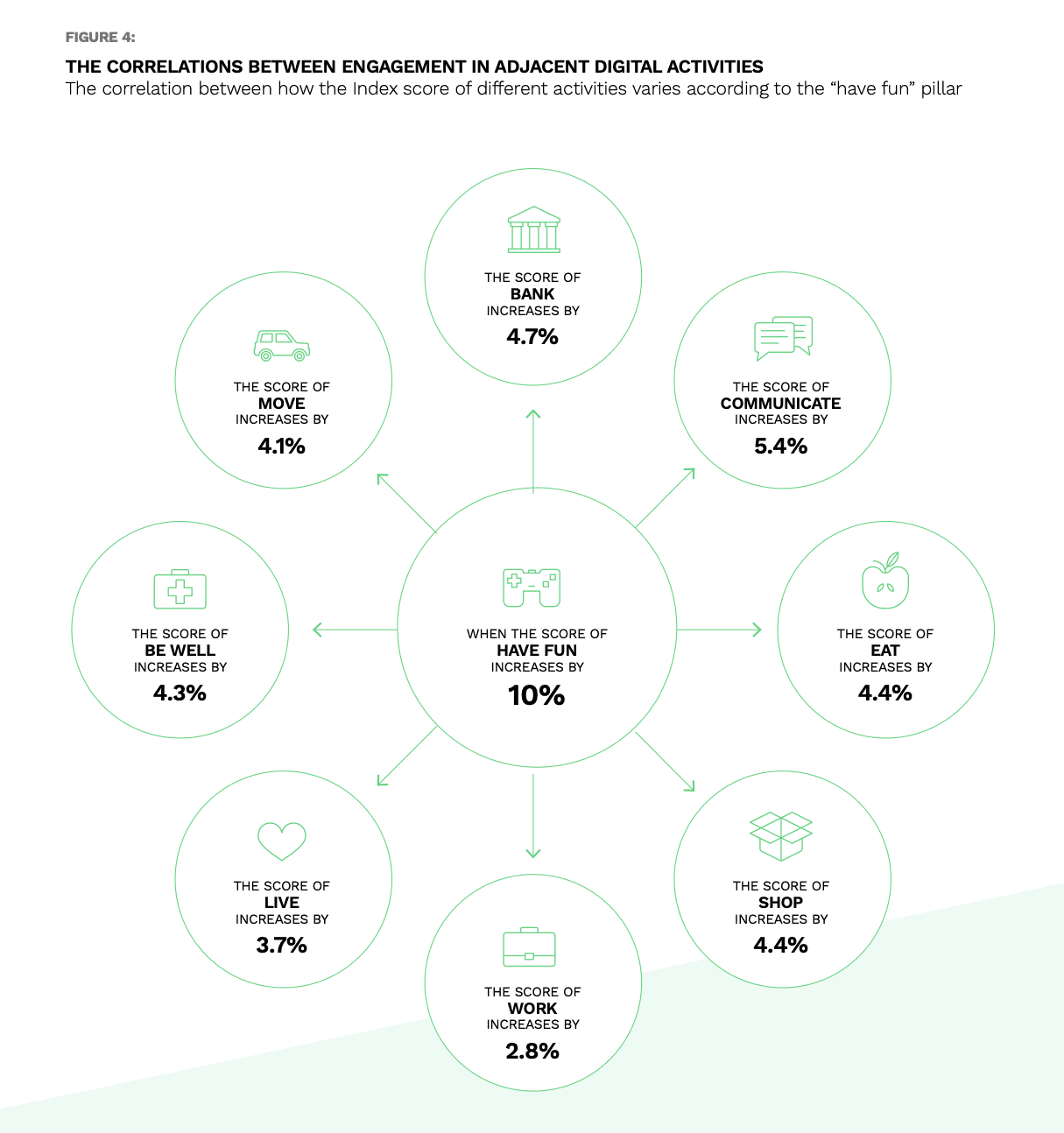How the World Does Digital: Network Effects Snowball Into Greater Digital Engagement

Network effects happen when the number of people using a product or service scales to the point where new value is realized and created. It’s a rising tide that lifts all boats.
The digital transformation we’re now undergoing as a planet relies on the power of network effects to bring up the level of digital engagement to attain its greatest potential.
We explore this in Benchmarking The World’s Digital Transformation, a PYMNTS and Stripe collaboration, a quarterly measure of 15,100 respondents in 11 nations showing the progress made in embracing 40 key activities across the 10 broad categories of the PYMNTS ConnectedEconomy Index (CE Index) — what we call the “pillars” of the connected economy — in their daily lives from shopping to dining to how they pay.
In the inaugural study we see how picking up one digital behavior — be it subscribing to a retail box or using buy now, pay later (BNPL) for the first time — leads to more engagement.

One Thing Leads to Another
Our research into network effects and the connected economy in Benchmarking The World’s Digital Transformation shows that we’re still in early stages as those surveyed are on average engaging in 14 of the 40 activities contained within the 10 pillars of the connected economy.
However, the study states that “people who engage digitally in one activity for one specific reason tend to expand their digital footprint to other activities with similar characteristics, such as shopping, socializing, even banking. Network effects will accelerate the digital transformation of countries and economies as more consumers engage in one activity, then others with a similar look, feel, purpose and functionality.”
For example, 70% of consumers highly engaged digitally in the “shop” pillar (retail shopping) are also well represented in the “eat” pillar (buying from restaurants and grocery stores), and 64% of highly engaged shoppers “also show high digital engagement in grocery purchases, and 75% show high usage of digital methods to buy food from restaurants.”
We use the case of DoorDash grocery, noting that the more one orders such items from them, “more retailers and restaurants will want to become part of the DoorDash ecosystem, and the more grocery products DoorDash will likely add to its convenience store offering.”

Activities and Synergies
While the PYMNTS CE Index finds that the 11 nations studied are only 27% of the way to achieving the full potential of digital transformation in this first sounding, here again, network effects are expected to speed up that shift much as the pandemic accelerated the digital shift itself.
A place we observe network effects catalyzing more digital engagement (thus greater transformation) is in the “have fun” pillar where social media and shared interests are sparking more consumers engaged in, say, streaming video to begin engaging with something adjacent.
We found that 60% of the consumers engaging often in the “have fun” pillar (streaming) “are also highly digitally engaged in the ‘communicate’ pillar (messaging, social media), with 52% and 38% of consumers globally exhibiting high engagement in those pillars, respectively.”
Per the study, “These network effects will increase the overall CE Index ranking of individual countries as well as the collective ranking of the 11 countries in the study. If the number of consumers who use digital channels to shop across the 11 countries we studied increased by 10%, the CE Index score across those 11 countries could increase from 27 to 29.2 (an increase of 5.8%), moving digital transformation closer to its ultimate goal.”

Get Your Copy: Benchmarking The World’s Digital Transformation

